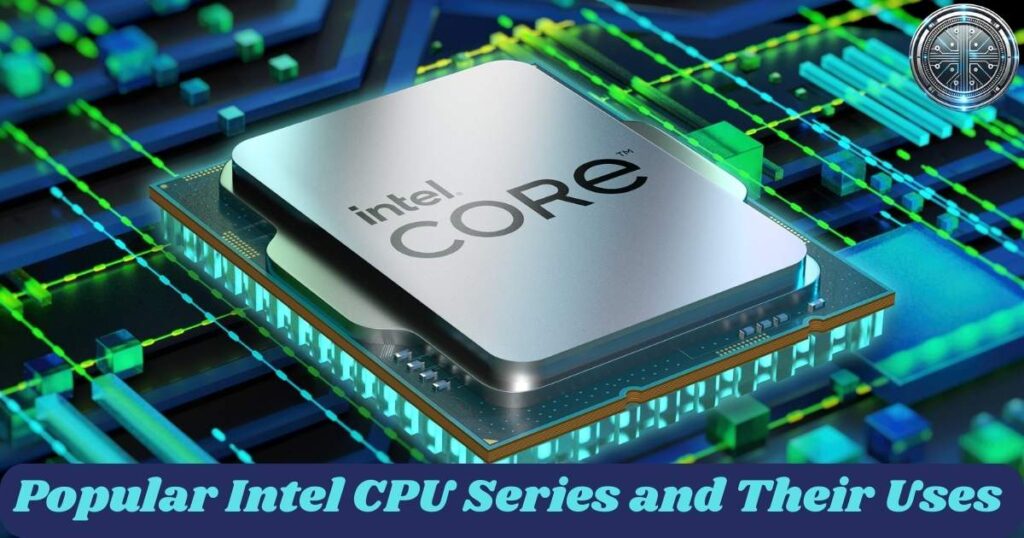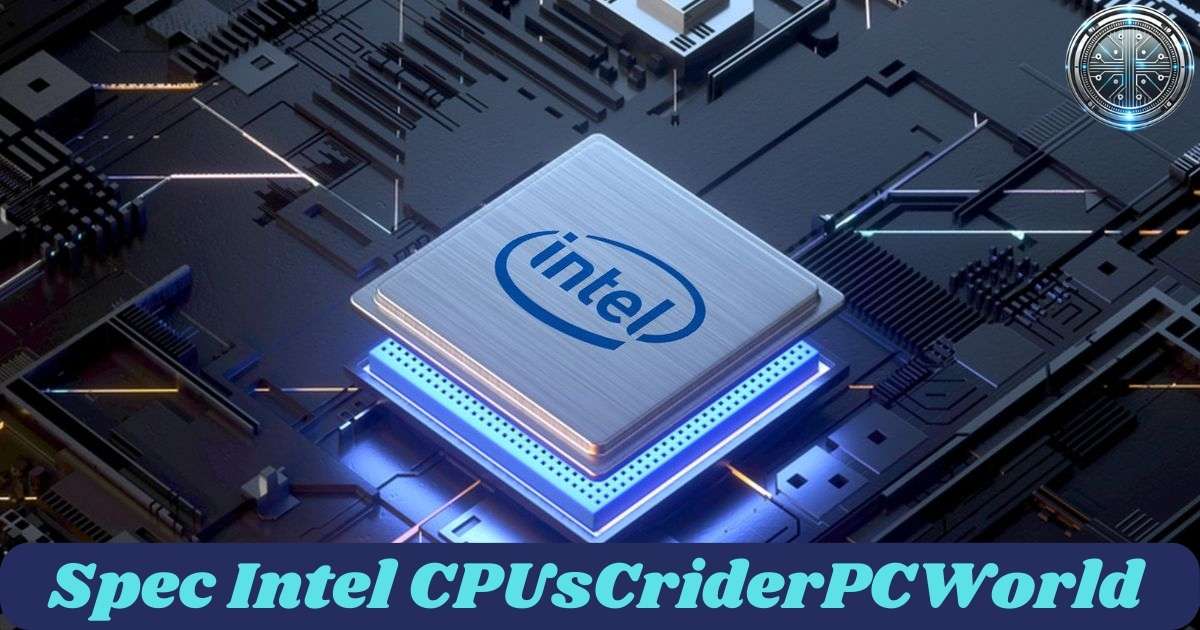Intel CPUs have long been a cornerstone of computing, offering a range of processors designed for different needs. From personal use to heavy-duty enterprise applications, Intel chips power countless devices globally. Their reliability, innovation, and performance have earned Intel a loyal following in the tech community. Now we will explore in this article Spec Intel CPUsCriderPCWorld.
Why are Intel CPUs so popular? Their strong performance, energy efficiency, and wide compatibility across different devices make them a preferred choice. With constant improvements in their architecture, Intel continues to meet the growing demands of both casual users and professionals.
Understanding Intel CPUs
What are Intel CPUs? Intel CPUs, or central processing units, serve as the brain of a computer, processing instructions from applications and operating systems. These chips vary in capabilities, from basic functions in everyday computers to complex tasks in workstations and servers.
Intel CPU Architecture defines the inner structure of these chips, including the cores, threads, and cache. Over the years, Intel has introduced designs like multi-core processing and hyper-threading to improve performance. The introduction of Intel’s Hybrid Architecture with Alder Lake and Raptor Lake models further revolutionized processing by mixing performance and efficiency cores for better power management.
Key Specifications of Intel CPUs
Core Count and Threads impact how well a CPU can handle multiple tasks at once. More cores and threads allow a processor to split workloads, making multi-tasking smoother, especially in gaming or video editing.
The Clock Speed and Turbo Boost dictate how fast a processor can complete tasks. Clock speed is measured in GHz, with Turbo Boost providing bursts of higher speed for short tasks. Cache Size, on the other hand, determines how quickly the CPU can access frequently used data, improving overall speed.
The Thermal Design Power (TDP) is crucial for understanding a processor’s power consumption and heat output. A lower TDP typically translates to better energy efficiency and quieter operation, which is vital for laptops or compact systems.
Intel CPUs Performance and Benchmarks
Intel CPU Performance Benchmarks offer a real-world look at how well a processor performs in various tasks. Benchmarks are available for specific applications like gaming, content creation, and office productivity, helping users compare different models.
In gaming, Intel CPUs deliver fast, responsive performance, especially in demanding titles. For content creators, CPUs with more cores and threads shine, delivering high multi-threaded performance for tasks like video rendering. Energy efficiency is another area where Intel chips have improved, offering better performance per watt.
Popular Intel CPU Series and Their Uses

The Intel Core Series, including i3, i5, i7, and i9, offers a range of options balancing performance and cost. The i3 models are perfect for everyday users, while the i9 chips are ideal for professionals requiring maximum performance for tasks like gaming or 3D rendering.
For specialized use, the Intel Xeon series is built for servers and workstations. These processors support multi-threading and large-scale applications, making them ideal for enterprise environments. On the other hand, Intel Atom and Pentium CPUs focus on low power consumption and high efficiency, perfect for budget devices or mobile systems.
Read more: Budget Hacks CWBiancaMarket: A Guide to Smarter Shopping
Choosing the Right Intel CPU
When choosing the right Intel CPU, consider factors like usage, performance needs, and budget. A gaming enthusiast should prioritize high clock speeds and multi-core support, while a content creator would benefit from processors with more threads and better multi-threaded performance.
Everyday users will find that an Intel i3 or i5 chip is more than enough for tasks like browsing the web, watching videos, and light productivity. The right CPU can help improve the user experience, ensuring smooth performance without unnecessary costs.
Intel CPUs in Different Devices
Intel CPUs for Gaming deliver high performance, particularly with higher-end models like i7 and i9, providing smooth gameplay even in graphically demanding games. Intel’s Turbo Boost technology also helps with faster frame rates in high-performance gaming.
For content creators, Intel CPUs with more cores, such as the Core i9, are a solid choice due to their ability to handle tasks like video editing and 3D rendering with ease. For more general everyday use, Intel CPUs in laptops offer a balance of portability and power, ensuring long battery life without compromising too much on performance.
Optimizing Your Intel CPU System
Practical steps to evaluate Intel CPUs include checking clock speeds, core count, and benchmarks for your specific needs. Tools like CPU-Z or Geekbench can help you assess the chip’s performance.
To optimize performance, consider overclocking if your CPU supports it, or ensure that the system has adequate cooling solutions to manage higher performance demands without throttling.
The Evolution and Legacy of Intel CPUs
Intel CPUs have evolved from simple processors to the powerful multi-core chips we use today. In the early days, Intel dominated the CPU market with its x86 architecture, paving the way for modern computing.
Intel’s recent innovations in CPU design, such as Alder Lake and Raptor Lake, have pushed the boundaries of what is possible with hybrid architecture, balancing high performance and energy efficiency. Intel’s legacy continues, with the company shaping processor technology for future generations.
Intel vs. AMD: The Eternal Rivalry
The rivalry between Intel and AMD has been one of the most exciting in the tech world. Intel processors traditionally led in single-core performance, making them ideal for gaming and high-speed tasks, while AMD chips have excelled in multi-core performance and offered better value for money.
Intel’s pricing is often higher, but its strong reputation for quality, efficiency, and reliability keeps it in the lead for many consumers and businesses, though AMD is closing the gap quickly.
Read Also: FTAsiaFinance Technology: Key Features Driving Financial Innovation
The Future of Intel CPUs
Looking ahead, Intel’s future CPUs will likely continue to focus on higher performance, greater energy efficiency, and advanced AI capabilities. Upcoming developments, such as Intel’s 7nm chips, will provide even better performance while reducing energy consumption.
As demand for AI and machine learning grows, Intel is expected to integrate AI processing capabilities into its CPUs. The future of Intel CPUs will also include continued innovation in hybrid architectures, supporting a broader range of consumer and enterprise needs.
Conclusion
Intel CPUs continue to dominate the computing market with their consistent innovation, performance, and adaptability to a variety of applications. Whether for gaming, content creation, or everyday tasks, Intel offers a processor that meets diverse needs with exceptional efficiency and power.
Looking ahead, Intel’s focus on hybrid architectures, energy efficiency, and cutting-edge technologies like AI integration ensures that its CPUs will remain a crucial part of the computing landscape for years to come, solidifying its legacy as a leader in the industry.
FAQ’s
1. How do Intel CPUs compare to AMD processors?
Intel CPUs are known for their single-core performance and energy efficiency, while AMD excels in multi-core performance and often offers better value for money.
2. Can Intel CPUs be overclocked?
Yes, many Intel CPUs, particularly those in the K series, can be overclocked for enhanced performance, provided they have adequate cooling.
3. Are Intel CPUs compatible with all motherboards?
No, Intel CPUs require specific motherboards with the correct socket type and chipset to ensure compatibility.
4. What is the difference between Intel Core and Xeon processors?
Xeon processors are designed for servers and workstations, offering more cores and support for ECC memory, while Core processors are aimed at general consumer use.
5. Do Intel CPUs come with integrated graphics?
Many Intel CPUs, especially the Core i3, i5, and i7, come with integrated graphics, but high-end models like the i9 typically require a dedicated GPU for advanced graphics performance.











